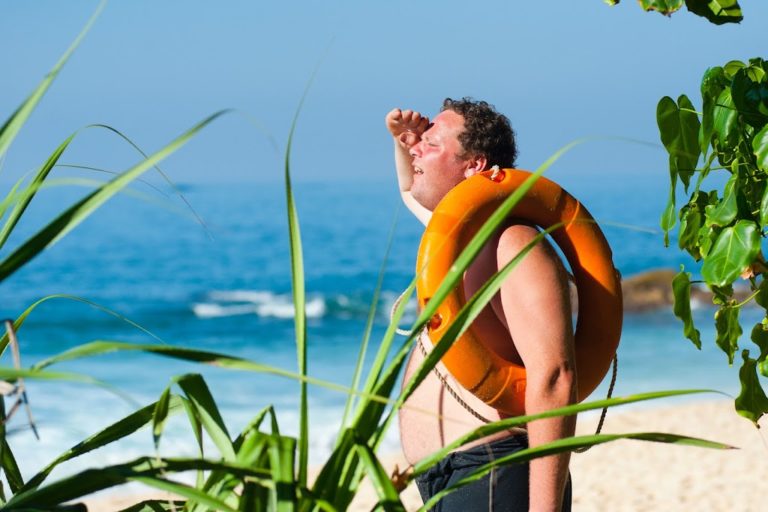Swimming pools are synonymous with fun, relaxation, and exercise, but it’s essential to be aware of the potential risks associated with these aquatic environments. Pool-related illnesses and diseases, commonly known as recreational water illnesses (RWIs), can put a damper on your summer enjoyment. By understanding the causes, symptoms, and prevention measures, you can protect yourself and your loved ones from these health hazards.
What Are Swimming Pool Illnesses?
Swimming pool illnesses are infections caused by bacteria, viruses, or parasites present in contaminated pool water. These pathogens can enter the body through ingestion, inhalation, or contact with infected water, leading to various health issues.
What Are The Common Types of Pool Diseases?
Common types of pool diseases, or recreational water illnesses (RWIs), can vary but typically include the following:
Cryptosporidiosis:
This parasitic infection is caused by the protozoan Cryptosporidium. It can lead to gastrointestinal issues such as diarrhea, stomach cramps, and nausea. Cryptosporidiosis is highly contagious and can spread through swallowing contaminated water.
Legionnaires’ Disease:
Caused by the Legionella bacteria, this severe respiratory illness can be contracted through inhalation of water droplets containing the bacteria. Symptoms resemble pneumonia and may include high fever, cough, shortness of breath, muscle aches, and headaches. Legionnaires’ Disease can be life-threatening, particularly for individuals with weakened immune systems.
Swimmer’s Ear (Otitis Externa):
This infection affects the ear canal and is often caused by prolonged exposure to water. It can result in pain, itching, redness, swelling, and discharge from the ear. Bacteria or fungi present in contaminated water can cause swimmer’s ear.
Skin Infections:
Various bacterial and viral infections can be transmitted through contact with contaminated water. These include:
a) Impetigo:
A highly contagious bacterial skin infection characterized by red sores that break open, ooze, and form yellowish-brown crusts.
b) Molluscum Contagiosum:
A viral infection causing small, raised bumps on the skin. It is spread through direct contact with infected water or surfaces.
c) Herpes Simplex:
The herpes simplex virus can cause cold sores or genital herpes. Contact with the virus through contaminated water can lead to infection.
Gastrointestinal Illnesses:
Various gastrointestinal infections, such as norovirus and E. coli, can be contracted from swallowing water contaminated with fecal matter. These infections can result in symptoms like diarrhea, vomiting, stomach cramps, and fever.
It’s important to note that these are just a few examples of common pool diseases. There may be other specific pathogens that can cause illnesses in swimming pool environments. Maintaining proper pool hygiene, water disinfection, and following recommended safety practices can significantly reduce the risk of contracting these diseases.
How to Prevent Swimming Pool Illnesses?
Preventing swimming pool illnesses requires a combination of personal hygiene practices and proper pool maintenance. Here are some essential preventive measures:
Shower before Swimming:
Rinse off any dirt, sweat, or cosmetics that can react with pool chemicals and promote the growth of pathogens. Showering helps reduce the introduction of contaminants into the pool.
Stay Out of the Pool When Ill:
Avoid swimming if you have diarrhea, a respiratory infection, or an open wound. Illnesses can easily spread in pool water, and swimming while sick can worsen your condition and put others at risk.
Practice Good Hygiene:
Encourage regular bathroom breaks, especially for young children. Urinating or defecating in the pool introduces contaminants. Remind pool users to use the restroom and practice proper hygiene before entering the water.
Ensure Adequate Pool Disinfection:
Public pools should maintain proper chlorine or bromine levels to kill bacteria and viruses effectively. The pool’s disinfection system should be regularly monitored and adjusted as needed. Homeowners should also test their pool water and maintain appropriate disinfection levels.
Avoid Swallowing Pool Water:
Encourage pool users to avoid swallowing pool water. Educate children and adults about the importance of keeping their mouths closed while swimming and playing in the water.
Educate Yourself:
Stay informed about pool water maintenance, filtration systems, and the signs of poor water quality. Knowing how to identify potential issues allows you to make informed decisions about swimming in a particular pool.
Use Well-Maintained Pools:
Choose swimming facilities that prioritize proper pool maintenance and follow health and safety regulations. Well-maintained pools with regular water quality testing and cleaning reduce the risk of waterborne illnesses.
Practice Proper Pool Hygiene:
Encourage pool users to avoid spitting, blowing their nose, or engaging in other activities that can introduce contaminants into the water. Promote the use of proper swimwear, including swim diapers for infants and young children.
Educate Pool Users:
Provide information to pool users about the importance of following hygiene practices, showering before swimming, and the risks associated with pool-related illnesses. Promote awareness through signage, brochures, and online resources.
Regular Pool Maintenance:
Proper pool maintenance is crucial for preventing the growth of bacteria and viruses. Maintain appropriate pH levels, clean filters regularly, and ensure proper circulation of pool water. Consider hiring professional pool services for regular maintenance and inspections.
By following these preventive measures, you can reduce the risk of swimming pool illnesses and create a safer and healthier swimming environment for everyone.
What Are The Signs and Symptoms of Pool-Related Illnesses?
The signs and symptoms of pool-related illnesses, or recreational water illnesses (RWIs), can vary depending on the specific disease or infection. Here are some common signs and symptoms to be aware of:
Gastrointestinal Symptoms:
Diarrhea
Stomach cramps
Nausea
Vomiting
Respiratory Symptoms:
Coughing
Shortness of breath
Chest discomfort
Fever
Headaches
Muscle aches
Ear Infections (Swimmer’s Ear):
Ear pain
Itching or irritation in the ear canal
Redness and swelling around the ear
Discharge or fluid from the ear
Skin Infections:
Redness
Irritation
Rash or bumps on the skin
Itching or discomfort
Conjunctivitis (Red, Irritated Eyes):
Redness in the whites of the eyes
Itching or burning sensation
Watery eyes
Sensitivity to light
Discharge from the eyes
Fever and General Malaise:
Elevated body temperature
Fatigue
Weakness
Overall feeling of being unwell
It’s important to note that these symptoms can also be indicative of other illnesses or infections not related to swimming pools. If you experience any of these symptoms after swimming in a pool or being in contact with recreational water, it’s advisable to seek medical attention for a proper diagnosis and appropriate treatment.
Remember, practicing good hygiene, following preventive measures, and maintaining proper pool disinfection and maintenance can significantly reduce the risk of pool-related illnesses.
Proper Pool Maintenance Tips
Proper pool maintenance is essential for ensuring a clean, safe, and enjoyable swimming environment. Here are some key aspects of proper pool maintenance:
Regular Water Testing:
Test the pool water regularly to monitor chemical levels and ensure they are within the appropriate range. The important parameters to test include pH, chlorine/bromine levels, alkalinity, and calcium hardness. Test kits or strips are readily available for home use, or you can consult professional pool services for accurate testing.
pH Balance:
Maintain the pH level of the pool water between 7.2 and 7.8. Proper pH balance ensures that the chlorine or bromine in the water remains effective in killing bacteria and viruses. pH levels outside this range can lead to poor water quality and potential health risks.
Chlorine or Bromine Levels:
Maintain adequate levels of chlorine or bromine in the pool water to disinfect and kill bacteria, viruses, and other pathogens. The recommended range for free chlorine levels is typically 1-3 parts per million (ppm) for residential pools. For bromine, the recommended range is typically 3-5 ppm. However, follow manufacturer guidelines and consult pool professionals for specific recommendations.
Filtration System Maintenance:
Clean and maintain the pool’s filtration system regularly. This includes cleaning or backwashing the filter to remove debris, leaves, and other contaminants that may accumulate. Clogged or dirty filters can hinder proper water circulation and reduce filtration efficiency.
Skimming and Cleaning:
Skim the pool surface regularly to remove leaves, insects, and other debris. Additionally, vacuum or brush the pool walls and floor to prevent the buildup of algae, bacteria, and other contaminants. Pay attention to corners, steps, and hard-to-reach areas.
Adequate Circulation:
Ensure that the pool water is adequately circulated through the filtration system. Proper circulation helps distribute the chemicals evenly and promotes effective filtration. Run the pool pump for an appropriate duration each day, depending on the pool size and usage.
Shock Treatment:
Occasionally, perform shock treatments to eliminate chloramines, which are formed when chlorine combines with contaminants. Shocking the pool involves adding a higher dose of chlorine or a specialized pool shock product to oxidize and remove these compounds. Follow the recommended guidelines for shock treatment based on the pool size and specific product instructions.
Regular Water Level Maintenance:
Monitor and maintain the appropriate water level in the pool. Refill as needed to prevent the pump from running dry and to ensure proper skimming and filtration.
Safety Measures:
Install safety features like pool covers, fences, and alarms to prevent accidents and unauthorized access. Regularly inspect and maintain these safety measures to ensure their effectiveness.
Professional Maintenance Services:
Consider hiring professional pool maintenance services for routine inspections, cleaning, and maintenance tasks. Professionals have the expertise to handle more complex pool systems and can provide valuable advice on proper pool care.
By following these guidelines for proper pool maintenance, you can ensure a clean and safe swimming pool that enhances your enjoyment while minimizing the risks of waterborne illnesses and other potential hazards.
What Are The Safety Tips for Pool Owners and Operators?
Pool owners and operators have a responsibility to maintain a safe swimming environment for their guests. Here are some important safety tips for pool owners and operators:
Adequate Supervision:
Ensure that trained lifeguards or qualified pool attendants are present during pool hours to actively monitor swimmers and respond to emergencies promptly.
Proper Staff Training:
Provide comprehensive training to pool staff on water safety, CPR, first aid, and rescue techniques. Regularly update their skills and knowledge through refresher courses and certifications.
Clearly Display Safety Rules:
Post clear and visible signage that outlines pool rules, diving restrictions, depth markers, and any other safety guidelines specific to the pool. Make sure guests are aware of and understand these rules.
Maintain Proper Water Chemistry:
Regularly test and maintain proper water chemistry, including pH levels and disinfection (chlorine or bromine) levels. This ensures that the water is clean, sanitized, and safe for swimmers.
Regular Inspections:
Conduct routine inspections of pool equipment, including pumps, filters, drains, and diving boards, to ensure they are in proper working condition. Address any maintenance or repair issues promptly to prevent accidents or injuries.
Encourage Hygiene Practices:
Educate pool users about the importance of showering before entering the pool, not swimming when ill, and using proper swimwear. Promote proper hygiene practices to reduce the risk of waterborne illnesses.
Provide Adequate Lifesaving Equipment:
Keep appropriate lifesaving equipment near the pool area, including lifebuoys, rescue poles, and reaching devices. Ensure that they are in good condition, easily accessible, and visible to staff and guests.
Maintain Clear Visibility:
Ensure that the pool area has clear visibility from various vantage points. Trim trees, remove obstacles, and position lifeguard stands strategically to minimize blind spots and improve supervision.
Regular Safety Drills:
Conduct regular safety drills and practice emergency response protocols with pool staff. This includes simulated rescues, evacuation procedures, and communication protocols.
Proper Chemical Storage:
Store pool chemicals securely in a well-ventilated and locked area, following manufacturer guidelines. Keep chemicals separate from each other and away from flammable materials to prevent accidents.
Secure Pool Area:
Implement proper fencing and gating around the pool area to prevent unauthorized access, especially when the pool is closed or unattended. Ensure gates are self-closing and latching to prevent unsupervised entry.
Weather Monitoring:
Establish policies and procedures for monitoring weather conditions. Have a plan in place for evacuating the pool area and providing shelter during severe weather, lightning storms, or other hazardous conditions.
Regular Training and Education for Guests:
Provide educational materials and resources to pool users on water safety, proper swimming techniques, and potential risks associated with the pool. Promote a culture of safety and awareness among guests.
By implementing these safety tips, pool owners and operators can create a secure swimming environment, reduce the risk of accidents, and ensure the well-being of their guests.
What to Do If You Suspect a Pool-Related Illness?
If you suspect that you or someone else has contracted a pool-related illness, it’s important to take immediate action. Follow these steps if you suspect a pool-related illness:
Seek Medical Attention:
Consult a healthcare professional as soon as possible for a proper diagnosis and appropriate treatment. Describe your symptoms and inform them about your recent pool exposure.
Report the Incident:
Notify the pool owner or operator about the suspected illness. Provide them with details about your symptoms, the dates of pool usage, and any other relevant information. Reporting the incident allows them to investigate and take appropriate measures to prevent further infections.
Contact Health Authorities:
Inform the relevant local health authorities or the appropriate regulatory agency responsible for overseeing public health and safety in your area. They can provide guidance, conduct investigations, and take necessary actions to ensure the safety of other pool users.
Prevent Further Spread:
Follow your healthcare provider’s instructions to prevent the spread of the illness to others. This may include practicing good hygiene, avoiding swimming until fully recovered, and informing close contacts who may have been exposed to monitor their health or seek medical attention if needed.
Assist with Investigations:
If requested, cooperate with health authorities or pool management during their investigation of the incident. Providing them with accurate information and any necessary samples can help identify the cause of the illness and prevent future occurrences.
Maintain Hydration and Rest:
Follow your healthcare provider’s advice for recovery, which may include staying hydrated, getting adequate rest, and taking any prescribed medications. Proper self-care will aid in your recovery process.
Preventive Measures for the Future:
Reflect on the incident and take necessary precautions to prevent future pool-related illnesses. This includes practicing good personal hygiene, following pool rules and guidelines, and ensuring that the pool you visit or use maintains proper sanitation and water quality.
Remember, swift action is crucial in addressing pool-related illnesses to protect your health and the health of others. Consulting healthcare professionals, reporting incidents, and cooperating with health authorities contribute to preventing further infections and maintaining safe swimming environments.
Conclusion:
Enjoying a refreshing swim in a pool is a popular summer activity, but it’s essential to be aware of the potential risks associated with swimming pool illnesses. By practicing good hygiene, ensuring proper pool maintenance, and educating yourself and others about the risks, you can minimize the chances of contracting a pool-related illness. Stay informed, take necessary precautions, and make the most of your pool experiences while keeping yourself and others safe and healthy.








